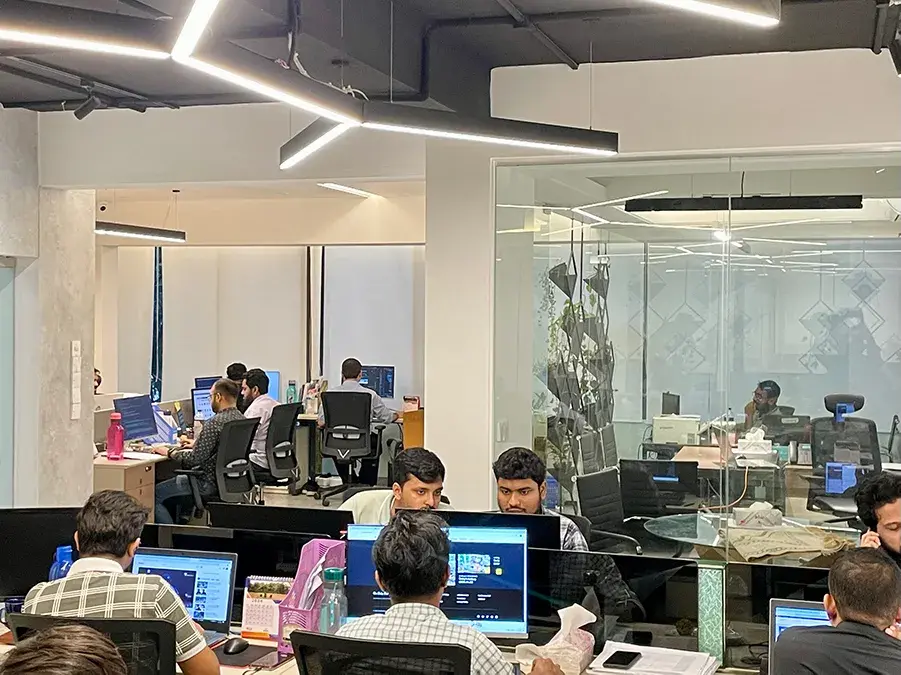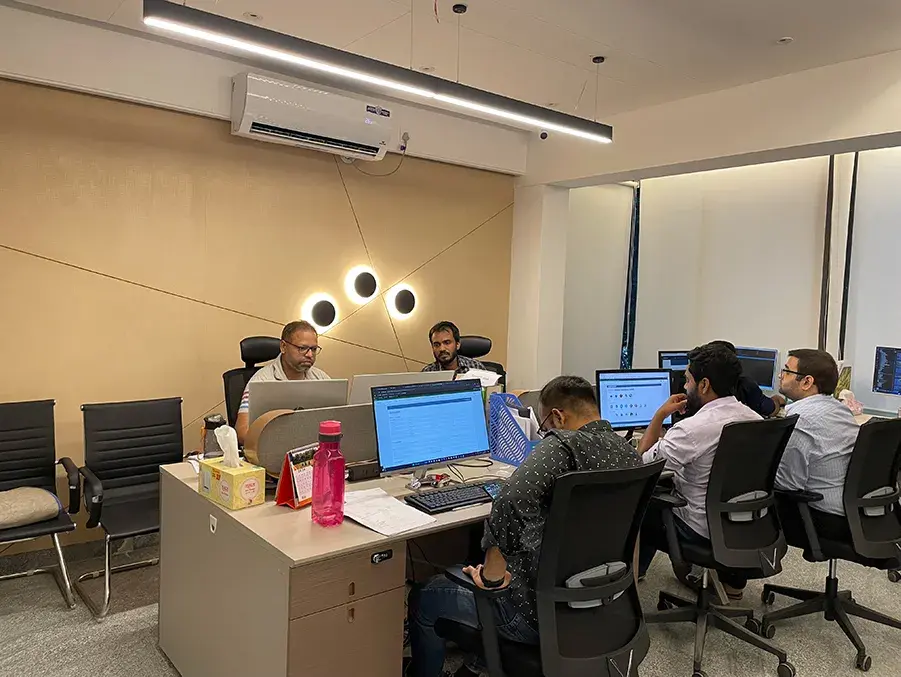
Building BlackOrigin: A Scalable Trading Bot for SaaS Marketplaces
We built BlackOrigin, a SaaS trading automation platform designed to execute lightning-fast trades on Bybit, powered by real-time TradingView signals.
The mission was simple yet demanding:
“Execute buy and sell orders instantly, size positions optimally, and compare cross-market prices — all while ensuring safety, reliability, and low latency.”
This post walks you through the architecture, technology choices (especially RabbitMQ), implementation highlights, hard lessons learned, and the results achieved.
🧭 Project Overview
BlackOrigin is a scalable SaaS trading application built for high-volume, real-time automated trading.
It listens to TradingView signals, computes trade quantities and risks, executes orders on Bybit, and continuously compares prices across multiple exchanges to optimize trading outcomes.
Core Capabilities
⚡ Real-Time Signal Processing: Instantly reacts to TradingView alerts.
🔁 Automated Trade Lifecycle: Signal reception → position sizing → execution → confirmation → monitoring.
🌐 Cross-Market Price Comparison: Checks multiple exchanges for optimal trade execution.
🔒 Concurrency Safety: Redis-based distributed locks prevent overlapping trades.
🧠 Resilience & Observability: Prometheus, Grafana, and Loki ensure transparent monitoring and error recovery.
📢 User Notifications: Telegram, email, and browser alerts (via OneSignal).
🚨 Error Alerts: Slack notifications instantly notify admins and superadmins of system errors.
🧩 Technology Stack
| Layer | Technology | |||||||||||||
|---|---|---|---|---|---|---|---|---|---|---|---|---|---|---|
Backend | Laravel (PHP) |
|||||||||||||
Frontend | Next.js |
|||||||||||||
Message Broker / Queue | RabbitMQ (high-throughput async processing) |
|||||||||||||
Caching & Locks | Redis |
|||||||||||||
Database | MySQL |
|||||||||||||
WebSocket | Laravel Reverb & Pusher |
|||||||||||||
Monitoring | Prometheus, Grafana, Loki, Promtail |
|||||||||||||
Payment Gateways | Stripe, Zip, Klarna, AfterPay, Volet (Crypto) |
|||||||||||||
APIs | REST, SOAP |
|||||||||||||
Authentication | JWT-based |
|||||||||||||
Third-Party Logins | Google, Telegram, Apple, Twitter, Facebook |
|||||||||||||
Notifications | Telegram, Email, Browser (OneSignal), Slack |
TradingView signals arrive fast — sometimes sending exit signals before entry trades are fully executed or when an entry signal fails.
To maintain consistent, safe trading logic, order dependencies must be preserved.
Rule: “An exit signal must never execute unless the corresponding entry trade succeeded.”
The Real Problem
- TradingView sends ENTRY → system enqueues entry job.
- Entry job fails (timeout/API error).
- The exit signal arrives soon after.
- Without correlation, the bot tries to close a trade that never opened → false or damaging orders.
Limitations of Laravel’s Default Queue
- ❌ No built-in message correlation (entry ↔ exit).
- ❌ No dead-letter exchanges (DLX) for structured retries.
- ❌ No conditional routing or delayed requeue logic.
- ❌ No management UI for inspecting or replaying messages.
- ❌ Manual DB checks needed — inefficient and error-prone.
Why RabbitMQ Wins
✔ Native support for dependency-based routing
✔ Built-in delayed retries and DLX
✔ Strong message ordering and visibility
✔ Full control via management UI
✔ Scales horizontally for live trading systems
⚙️ Architecture & Workflow (High-Level)
- TradingView sends a signal via webhook or REST endpoint.
- The backend normalizes the signal and enqueues it in RabbitMQ.
- Worker consumers calculate trade size and place orders on Bybit.
- Redis distributed locks ensure no conflicting trades occur for the same symbol.
- Prometheus, Grafana, and Loki handle monitoring and logs.
- Notifications are pushed to users and admins in real time.
🚀 Implementation Highlights
1. Concurrency Safety
Redis distributed locks serialize operations to prevent race conditions (e.g., two simultaneous signals for the same pair).
2. Retry & Idempotency
Each job uses unique idempotency keys, ensuring retries never cause duplicate executions.
3. Queue Specialization
RabbitMQ queues are separated by task type and priority — entry, exit, and settlement — ensuring ordered and controlled message flow.
4. Data Aggregator
A dedicated microservice normalizes price feeds from multiple exchanges, merging them into a canonical market feed for real-time price comparison.
5. Real-Time Frontend
Next.js frontend receives live WebSocket updates on trade status and price changes for a seamless dashboard experience.
🧠 Challenges & Lessons Learned
1. Payment Integration Complexity
Integrating multiple gateways (Stripe, AfterPay, Zip, Klarna, Volet) required handling different currencies, payment flows, and asynchronous webhooks.
Solution:
- Added multi-currency validation layers.
- Implemented conversion and reconciliation logic.
- Enhanced webhook retry and logging systems.
2. Queue Ordering & Concurrency
Ensuring entry-before-exit message flow in concurrent systems was critical.
Solutions:
- Created priority queues and routing keys for order-sensitive jobs.
- Used Redis locks and idempotency keys to enforce sequencing and avoid duplication.
3. Real-Time Multi-Exchange Synchronization
Different exchange APIs had varying latencies and formats, complicating trade reconciliation.
Solutions:
- Built a data aggregator to normalize and timestamp feeds.
- Optimized WebSocket multiplexing to reduce latency.
- Designed a lightweight reconciliation loop to match trade executions with market snapshots using tolerance windows.
📊 Results & Impact
✔ Low-Latency Execution: Trades executed in real time, even under heavy signal loads.
✔ Reliable Payment Support: Seamless integration of fiat and crypto gateways with secure webhook recovery.
✔ Scalable Architecture: RabbitMQ + Redis + Worker clusters enabled horizontal scalability.
✔ Robust Operations: Retry, idempotency, and distributed locks reduced trade conflicts drastically.
✔ Maintainable Foundation: Modular architecture supports future expansion to new exchanges, markets, and strategies.
Building BlackOrigin wasn’t just about coding a trading bot — it was about designing a scalable, fault-tolerant, and observant SaaS architecture capable of handling real-world trading chaos.
By leveraging RabbitMQ, Redis, and observability stacks, BlackOrigin achieved speed, stability, and transparency — three pillars essential for any automated trading platform.






_1760528543.webp)
